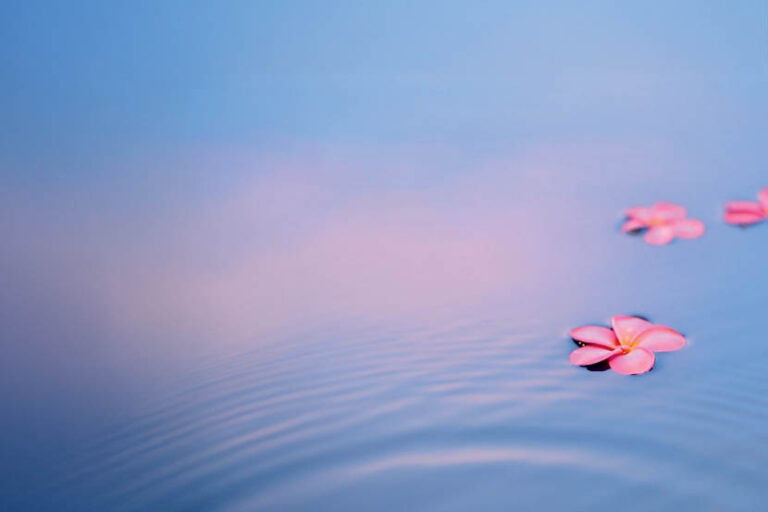
Dried flowers are a colourful and easy way of bringing nature into your home. Here are the best flowers for growing and drying.
A cheerful bunch of flowers brightens any room. Filling a home with fresh blooms, however, can be an expensive and constant task. This is where dried arrangements, which last almost indefinitely, come into their own, saving money and time while simultaneously bringing joy into your space. Katherine, a preserved blooms florist, loves how dried flower arrangements offer a low-maintenance way to experience the great outdoors: ‘Nature brings us happiness. Having it in your home has a positive impact on life and mental health.’ Katherine has noticed the interest in dried flowers soar in the past few years. ‘In our busy and unpredictable lives, we are all learning to appreciate the small things,’ she says.
Florist and dried flower enthusiast Felicity has spotted a similar trend: ‘During the cooler months, people spend more time inside,’ she says. ‘Dried flower arrangements can become a real centrepiece in your house.’
As many more people think about our impact on the environment, sustainable interior-decor choices are gaining in popularity and dried flowers tick this box. Their innate longevity means they are an environmentally kind option as there’s no need to continually buy new blooms that require more resources for growth and transportation. For those who have a garden, there’s also the opportunity for home-grown and dried flowers, a rewarding process that encourages a slower, relaxed pace.
Creating arrangements is also a restful activity that can provide a break from work while also forging a connection with nature, without leaving the house.
Read on to find out how to dry, create, and care for dried flower arrangements…
Drying
First, it’s worth noting that not all flowers are suited to this process. As Felicity points out, blooms that are naturally drier work best: ‘Lots of spring examples, like tulips and hyacinths, are hard to dry because they have soft, wet petals and take in a lot of water,’ she explains.
This will often result in fallen petals. Instead, flowers with natural dry stems, like strawflowers or banksias, will fare much better. If you’re growing your own, it’s best to pick them when they are dry. ‘When cut wet, they will rot,’ says Felicity. It’s also useful to pick them at their peak. ‘Cut them when they would normally be harvested, ideally in full bloom or, if not, just before or just after,’ she says. Once picked, they are best dried hanging upside down in a cool, dark place, such as an airing cupboard, for two to three weeks. However, some particularly sturdy species – hydrangeas, for example – can be left to dry from fresh in a vase and will retain their shape pretty well. It’s not just flowers that can be dried either – leaves, foliage, oats, wheat, and herbs are also excellent and will add height and structure within a vase.
Katherine uses preserved flowers for her arrangements. This involves replacing the sap with 100 percent plant-based glycerine and dyes to ensure longer-lasting colour and softness than traditional dried varieties. Her blooms come from expert preservers, who grow them especially for preserving and picking at their peak. It’s possible, however, to attempt a similar technique at home. Place the stems of fresh flowers in a mixture of two parts lukewarm water to one part glycerine and leave for two to three weeks. After this, they can be dried as usual.
Choosing a variety of blooms and foliage will create a visually pleasing bouquet.
Creating
Once the flowers are ready, an arrangement can be put together. Choosing a variety of blooms and foliage will create a visually pleasing bouquet, and the same rules of traditional floristry apply here. ‘Cut the stems between one-and-a-half times and two times the height of the vase,’ says Katherine. Cutting them at different lengths between these two points will create a well-balanced arrangement.
If you need to add height, a piece of floral foam or chicken wire can be placed in the bottom of the vase. ‘Start with stronger stems (the woodiest type) to provide structure and the shape you want to achieve,’ Katherine suggests. ‘Next, bring in your focal points and finish off by adding smaller flowers to fill in the space.’
Remember not to overfill the vase. ‘It should look comfortable. Don’t funnel things in,’ says Felicity. Both Felicity and Katherine advise avoiding transparent vases. ‘With fresh arrangements, seeing the water can bring a nice element, but with dried flowers the stems aren’t often very pretty,’ says Felicity. A coloured or patterned vase, a jug, or even a jar or tin are great alternatives.
Caring
The best thing about dried flower arrangements? They are low maintenance. The main deterioration is colour-fading, so it’s best if they’re not placed in direct sunlight. They might also get a little dusty. ‘Remove dust by giving them a gentle shake,’ says Katherine, ‘or use a hairdryer on a cool setting one metre away and gently blow them.’ The placement of the arrangement is also important. ‘Try not to put it somewhere people always walk past, like a tight hallway. The petals can be brittle and will fall off,’ says Felicity.
The best blooms for growing & drying
Hydrangea
Available in a wide range of colours from classic cream and magenta pink to lavender purple and cornflower blue, these large globe-shaped flowers make a stunning centrepiece.
Leave in a vase out of the direct sunlight to avoid too much petal-fading. If you want to grow them at home, bushes bloom in the late spring and summer and fare best in a garden that receives morning sunlight and afternoon shade.
Banksia

The magnificent banksia plant makes a perfect focal point for a dried flower arrangement. With many varieties native to Australia, they are available in yellow, red, orange, and pink hues. Their serrated leaves add a spray of unique foliage to the bouquet, too.
Strawflower

Available in a rainbow of shades, these sunny flowers have a flutter of small petals around a central bud. This tough plant is already relatively dry, making it a great option for arrangements. It’s also a great one to grow; the seeds are found in the head, which means it can be replanted perennially.
Gypsophila
Otherwise known as baby’s breath, this delicate and whimsical white bloom looks lovely. Cut the sprays when the buds are partially open and tie together five to seven stems before hanging upside down to dry.
Lavender

This bushy, strong-scented plant forms an excellent display, either alone or as part of an arrangement. Great for bedrooms, the calming fragrance can help induce a deep sleep. Gather bundles of fresh lavender and dry upside down.
Eucalyptus

One of the easiest and most affordable options for indoor greenery. Sprigs of fresh eucalyptus can be dried straight in the vase. As a bonus, the scent will fill your home with freshness.
Pycnosorus

Commonly known as billy buttons, these charming Australian native flowers dry beautifully thanks to their woody stems and simple spherical flowers. Playful and bright, they add golden pops of colour to any flower arrangement.




















